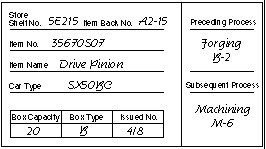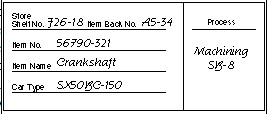Kanban employs Kanban card wherein, Kan means color and Ban means card used for inventory.
Kanban starts with the customer’s order and follows production downstream. Because all requests for parts are pulled from the order, kanban is sometimes referred to as a “pull” system. Kanbans represent replenishment signals that are usually manual and highly visible such as a color-coded card that moves with the material, a light that goes on when replenishment is required, or an empty bin that is moved to the supply location to trigger replenishment.
The system provides support for external devices such as bar code readers to read kanban cards and trigger a replenishment signal. Kanbans can be sourced from an external supplier or an internal organization. A “Supplier” kanban triggers a purchase request to the supplier, while an “inter-org” kanban results in an inter-organization transfer.
Kanbans are generally replenishable and cycle through the system from full to empty, remaining active until they are withdrawn. One-time signals called non-replenishable kanbans are used primarily to manage sudden spikes in demand. Two types of Kanban cards are used, which are
| Kanban Type | Description | Example |
| A Withdrawal or Move or Conveyance Kanban (C-Kanban) | It specifies the kind and quantity of product which a manufacturing process should withdraw from a preceding process. The example shows the B-2 preceding process is forging, and the person carrying this Kanban from the subsequent process must go to B-2 to withdraw drive pinions of 20 units and in ‘B’ box shape. This Kanban is the 4th of 8 issued. It signals the need to deliver more parts to the next work center. |  |
| Production-ordering Kanban (P-kanban) | It specifies the kind and quantity of product which the preceding process must produce. The example shows that the machining process SB-8 must produce the crankshaft and placed at store 726-18. It also called as an in-process Kanban or a production Kanban. It signals the need to produce more parts. |  |

